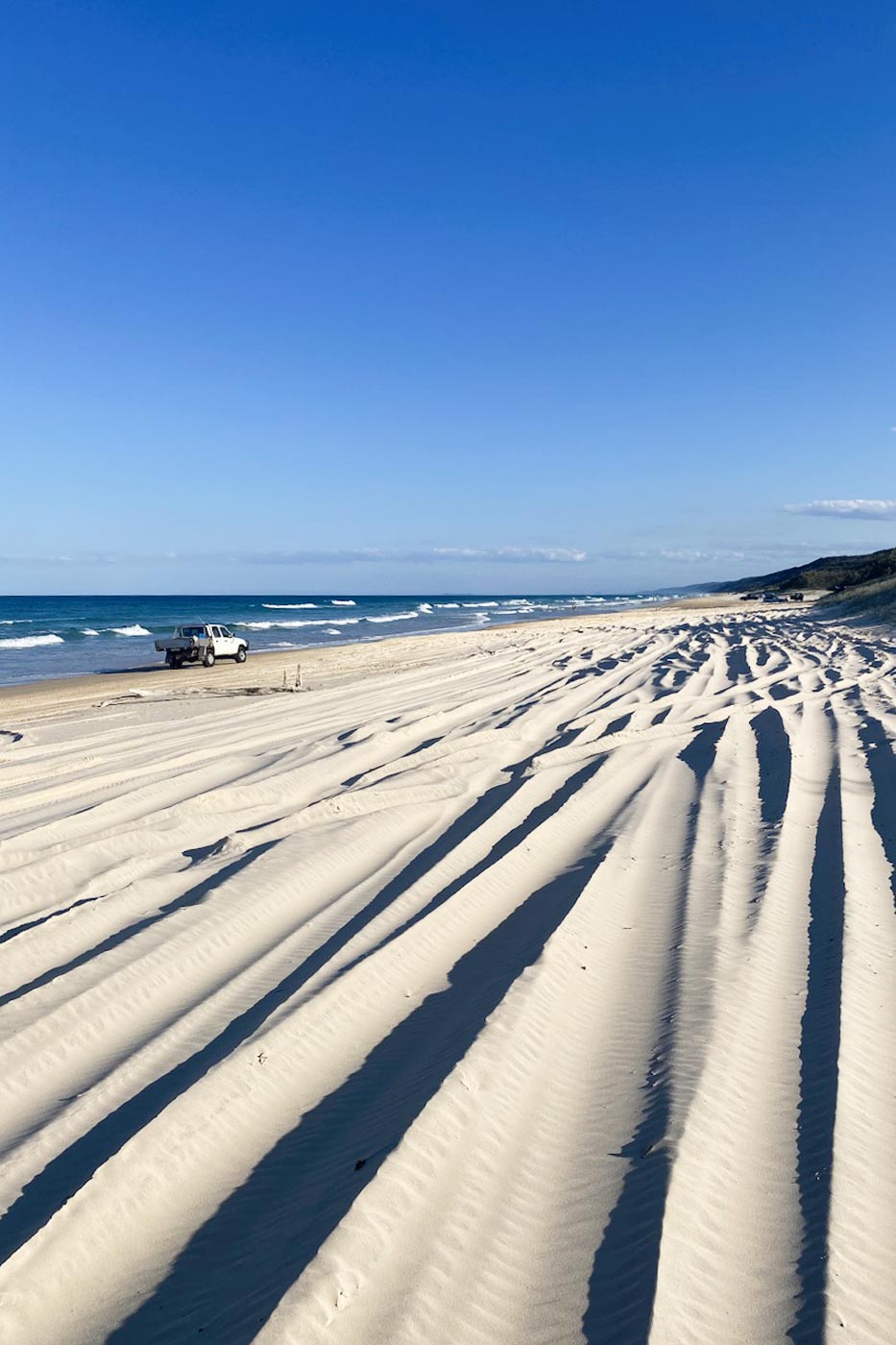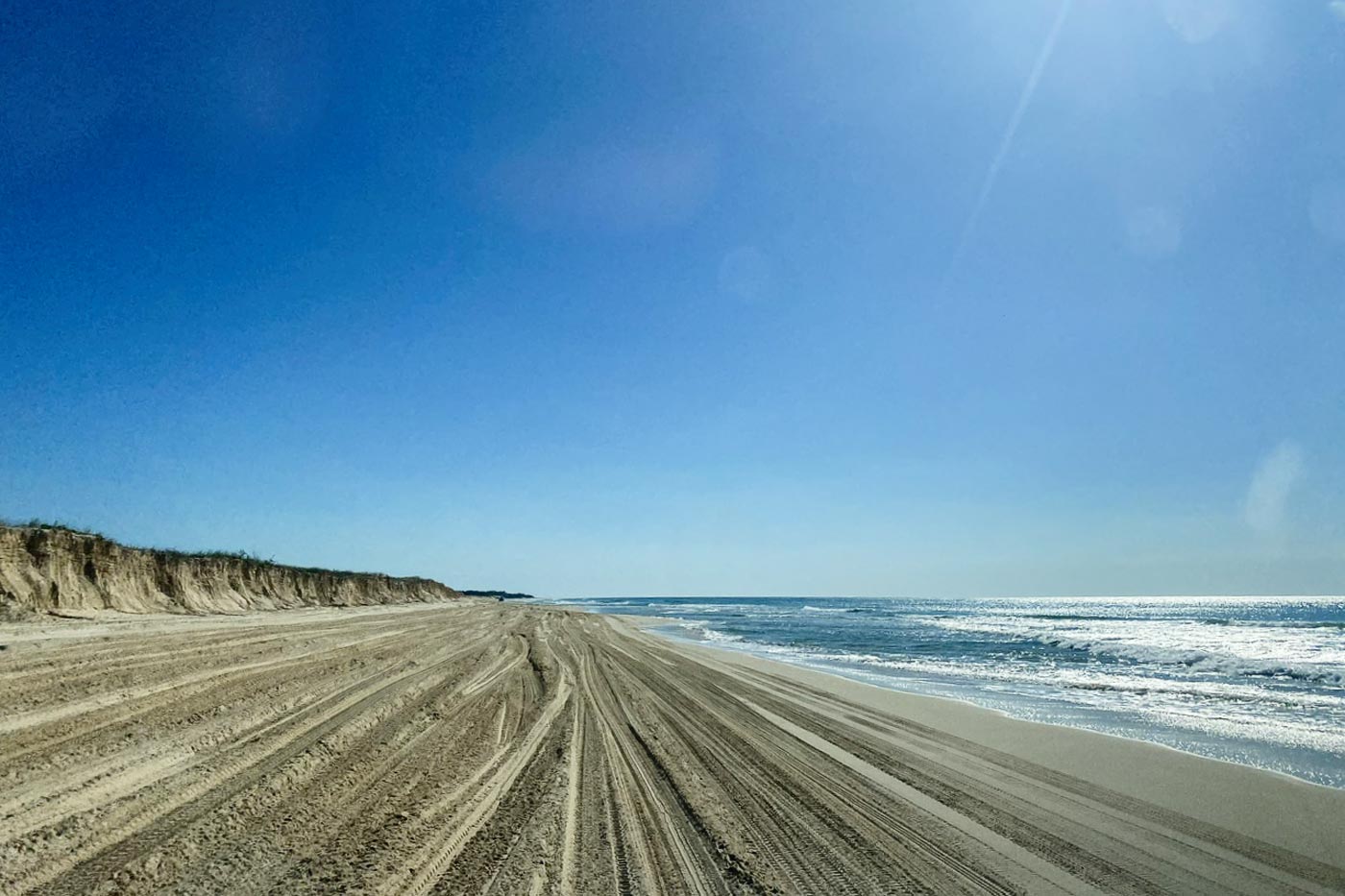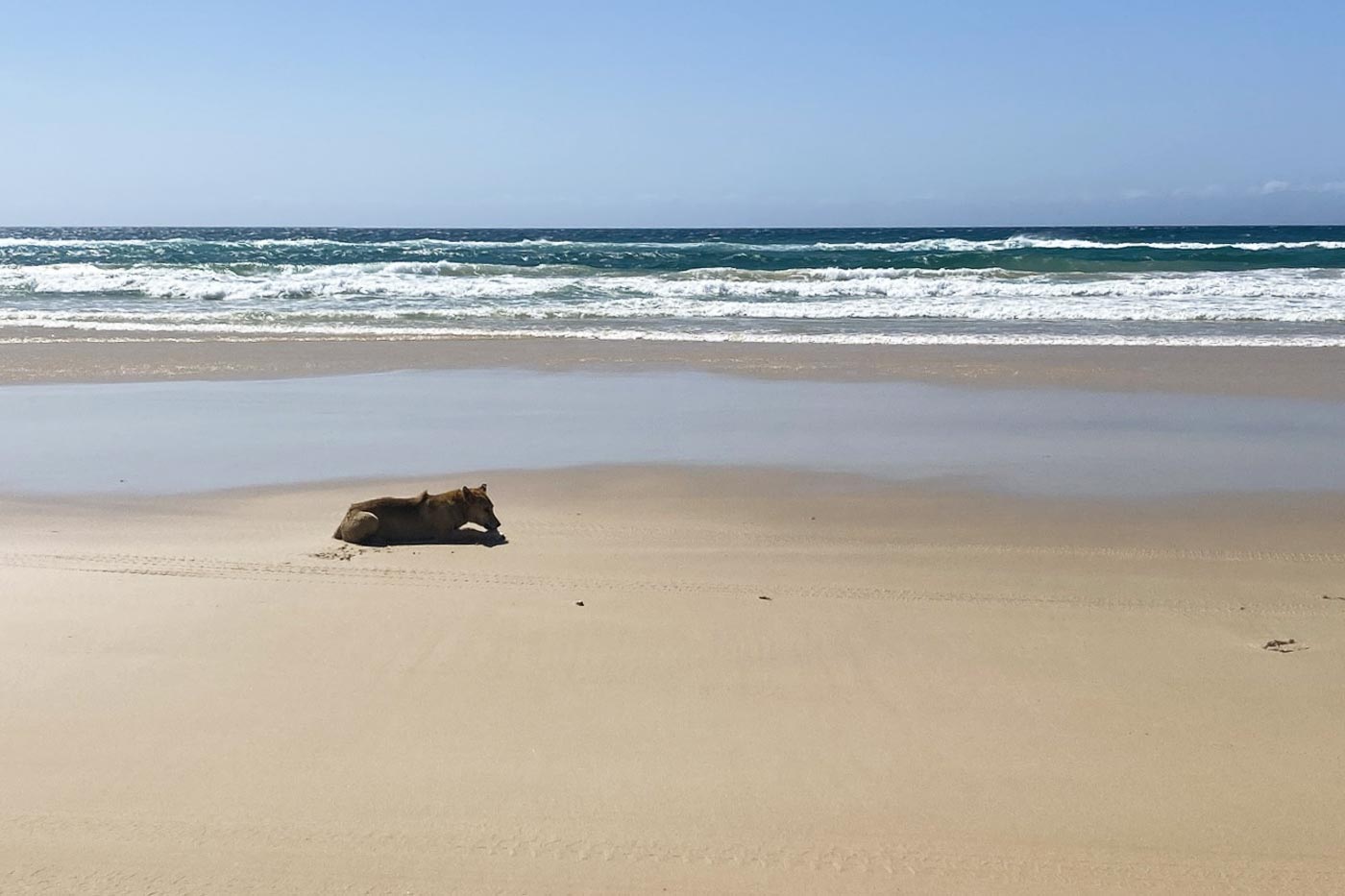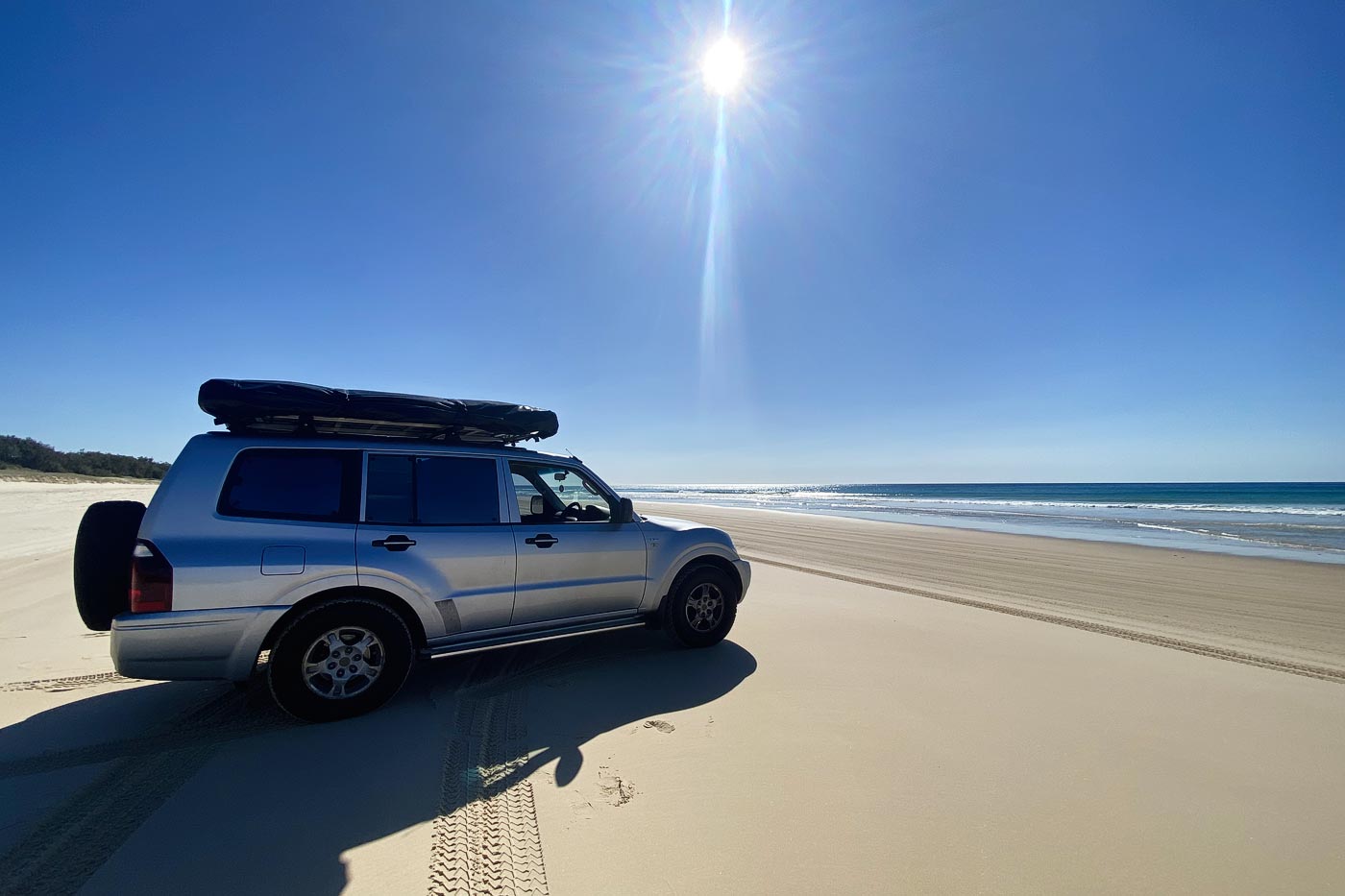Have you ever imagined driving along the beaches of Fraser Island, with the sea on one side and the dunes on the other—speeding along, dodging waves, sending sand and water flying, and soaking in an exhilarating adventure?
If you’re craving a drive through K’gari, keep in mind that this off-road journeydemands careful preparation and essential precautions.
The tips in this article are based on our first-hand experience and the official English-language guide from Queensland Parks & Wildlife.
Get Ready to Drive Through K’gari
You’ve heard the saying: “Better safe than sorry.” That’s especially true here. In this section, we’ll go through key tips to consider before driving on Fraser Island.
Inspect Your SUV Before Hitting the Beach
Driving through K’gari will push your vehicle to its limits. That’s why we recommend a full vehicle inspection before your trip to make sure your SUV is up to the task. Think of it like sharpening your sword before a battle—better to prepare than deal with breakdowns involving your engine, suspension, tires, or brakes.
Bring Your Own Recovery Equipment
Picture this: your car gets stuck, and there’s no one around to help. Now what?
If you’re planning to drive on Fraser Island’s beaches, this scenario is entirely possible. So make sure to pack at least the following essential recovery tools:
- Tire pressure gauge
- Air compressor
- Shovel
- Recovery tracks
- Tow strap (snatch strap)
Check the Tides Before Hitting the Beaches of Fraser Island
Yes, really—knowing the tides is crucial. The golden rule is to drive within two hours of low tide (either before or after). Ideally, aim to drive as close to low tide as possible.
Why? Because during high tide, parts of the beach become inaccessible, and you’ll be forced onto soft sand—making it much easier to get stuck.
We recommend planning your route around the tide chart. Try using the Tides AU app or visit the Rainbow Beach information center to grab a printed tide schedule.
Lower Your Tire Pressure
Lowering your tire pressure improves traction on sand—simple as that. Do this before driving on Fraser Island.
To find the correct pressure, check your vehicle’s 4×4 manual. In our case, we went from 40 psi down to 18 psi.
Engage 4×4 at All Times
Most modern 4WDs don’t engage 4×4 automatically—you have to switch it on manually. A common mistake is forgetting to do this before hitting the beach, which often leads to getting stuck in soft sand.
Avoid that hassle: activate 4WD before entering the sand and keep it on throughout your journey.
Obey Road Rules
Even though beach driving might feel like a wild adventure, Fraser Island’s beaches are legally classified as highways. That means normal road rules apply.
Drive on the left side (remember, you’re in Australia), follow the speed limit (usually 80 km/h), wear your seatbelt, and never hop in or out while the vehicle is moving.
Drive on Firm, Damp Sand
Stick to the firmest parts of the beach, which are usually darker in color due to retained moisture. Damp sand offers much better traction than dry, white sand.

Rain can actually help by compacting the sand, but never drive through waves or saltwater puddles—you could lose control or seriously damage your car.

Avoid Night Driving on Fraser Island
Night driving reduces visibility dramatically. Humidity in the sea air causes headlights to scatter, making it hard to see hidden rocks or soft sand.
Plus, wildlife is more active at night, increasing the risk of collisions.
Follow Other Vehicles’ Tracks
Especially in soft sand, it’s wise to follow existing tire tracks—they’re pre-compacted, making your ride smoother and reducing the risk of getting bogged.

Keep Your Momentum
When you hit a stretch of soft sand, especially when going uphill, maintain steady speed and RPMs. Momentum is key.
Approach dunes with confidence and only brake once you’re at the top.
Avoid Sudden Turns or Stops
Unless you’re avoiding an accident, don’t slam on the brakes or make sharp turns in soft sand. This can quickly get you stuck.
Watch Out for Wildlife and Pedestrians
Although Fraser Island’s beaches are legally highways, they’re shared spaces. You’ll often find children playing, families picnicking, fishermen, and even dingoes or flocks of seabirds relaxing on the sand.

Never Park on Dunes or in the Middle of the Highway
K’gari’s dunes are protected zones—parking there is completely illegal. Likewise, avoid parking in the middle of the beach “highway.” Instead, find a safe spot away from the shoreline and where you’re clearly visible to other drivers.

What to Do if Your Car Gets Stuck
Let’s face it: getting stuck happens. But don’t panic—just follow these steps:
- Stop accelerating immediately
- Shift into reverse, keep the wheels straight, and try to back up slightly
- Shift to first gear and move forward a little, following the same path
- Repeat steps 2 and 3 to create momentum and wiggle free
If that doesn’t work:
- Check your tire pressure again and reduce it further if needed (check your 4×4 owner’s manual for the correct tire pressure)
- Use a shovel to clear sand around the wheels. Sometimes it can get so stuck that the wheels no longer have traction.
- Place recovery tracks under the tires and drive out using the traction boost
Most importantly: stay calm. Don’t spin the wheels or accelerate aggressively, it will only dig you deeper. If you’re still stuck after all that, call for help and prepare your tow straps.
Final Thoughts on Driving on Fraser Island
After reading all these tips, you probably have a clear idea of how to prepare for driving on Fraser Island, how to navigate the beaches, and what to do if you get stuck.
We actually got bogged down right at the start of our K’gari trip—but in the end, it was just another story to tell. Don’t let fear of the unknown stop you from experiencing this incredible island.

Remember
- Take a look to the visa requirements for Australia (coming soon)
- Save money with Heymondo travel insurance
- Get your Australia eSIM with a discount and unlimited data